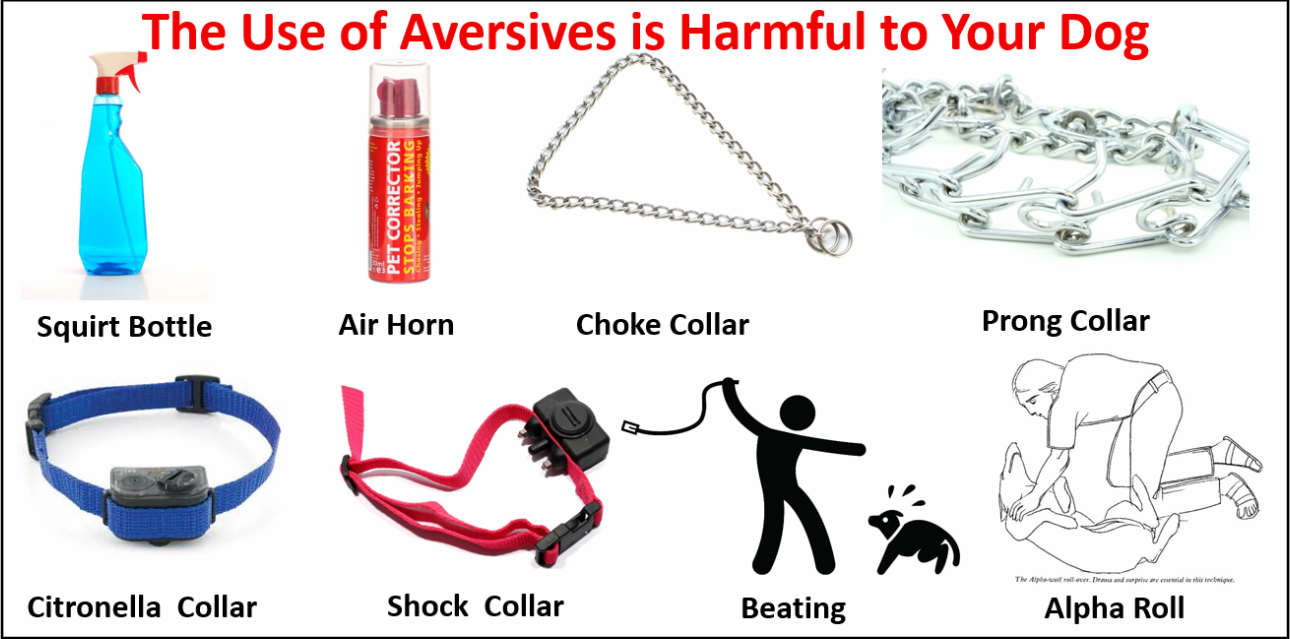
Photo Credit: https://www.greenacreskennel.com/blog/2017/04/25/dog-training-reward-based-training-versus-aversives/
At Underdog’s Triumph we believe in promoting (and using!) positive, force free dog training methods and tools. These tools are designed to help us work with our dogs and not against them. In the dog training lingo, we promote the use of LIMA – Least Intrusive, Minimally Aversive approach to modifying dog behavior. We advocate for giving the dog a choice and guiding him or her to the desired behavior. However there are many organizations that still do not follow these principles.
The prevalence of a popular dog show, The Dog Whisperer, (which I have written about in the past here) has revitalized a generation of up and coming dog trainers to the belief that dominance, pack theory and other outdated-no-longer-relevant theories are truth. They watch this show, see the super quick change in behavior and, despite the warning at the beginning of the show, try it on their own dogs. Even worse are the trainers who determine, they are not only experts at training their own dogs, but other dogs as well.
In my interactions with the various trainers in the area, I have run into many dog trainers with zero actual experience other than “working” with dogs for X years. Working and training are two vastly different things. And teaching people those skills is an even greater skill gap! The issue is due to a lack of education and understanding, these people continue to spout off outdated and incorrect information which owners accept as truth given they are coming from the mouth of a “professional.” Such things I’ve heard and seen recently include:
- Alpha rolls to show an aggressive dog who’s the pack leader
- Pinning the dog to the floor and holding the dog there until he “relaxes”
- Using shock collars/e-collars, prong collars, pinch collars, choke chains etc. to control their dominant dog. (Check out my post on what shock collars are here)
More and more countries are actually having to come out and ban these tools because of improper use by both professionals and the general public. Dog Training is (sadly) an unregulated industry which means anyone anywhere can call themselves a dog trainer without needing any training or certification. This also means that anyone can create any certification program and “certify” dog trainers without any regulatory process. So countries have had to step up to protect their animals. The following countries, as of this writing, have banned the use of e-collars/shock collars in dog training:
- Austria,
- Denmark,
- Finland,
- Germany,
- Norway,
- Slovenia,
- Scotland,
- Sweden,
- Wales,
- Australia (some parts)
- England (working on legislation)
In a recent paper written by the European Society of Veterinary Clinical Ethology (found here and the summary of that paper by Companion Animal Psychology found here) they highlighted some of the risks and dangers associated with using shock collars on dogs. While the focus of their study was only on shock collars the same concerns they bring up in the article can be applied to any other positive punishment or in negative reinforcement situation. Keep in mind the “positive” and “negative” here do not equate to good or bad like people think but rather the “addition to” or “subtraction of” some stimulus. The second word punishment or reinforcement again doesn’t equate to good or bad, but rather the “decreasing” or “increasing”, respectively, the likelihood that behavior will happen in the future. For shock collars, positive punishment would be the shock being added after every incorrect behavior. Negative Reinforcement would be the shock being applied continuously until the dog performs the desired behavior and the shock is removed.
I encourage you to read both especially before selecting a trainer or following the advice of a trainer (read more about finding a good dog trainer here or here). But after listing off all the (unproven) pros and cons to using tools with positive punishment or negative reinforcement, they conclude with this:
In conclusion, e-collar training is associated with numerous well documented risks concerning dog health, behavior and welfare. Any existing behavior problem is likely to deteriorate or an additional problem is likely to emerge, when such a collar is used. This becomes an even greater risk when this aversive tool is used by an unqualified trainer [or owner!]
Additionally, the efficacy of these collars has not been proven to be more effective than other alternatives such a positive training. Hence, ESVCE encourages educational programs which employ positive reinforcement methods (while avoiding positive punishment and negative reinforcement) thereby promoting positive dog welfare and a humane, ethical and moral approach to dog training at all times.
So love your dog (and yourself) and choose a method that promotes a strong, healthy bond between you and your dog.
